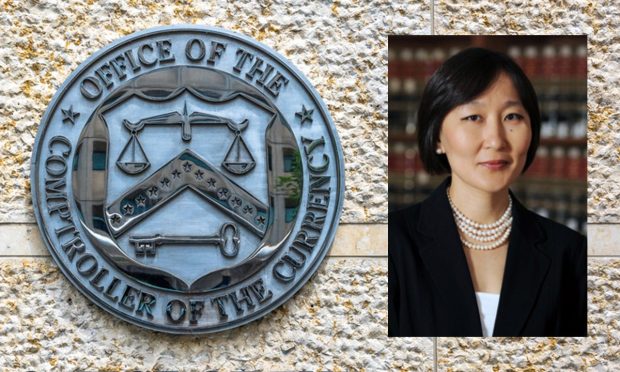OCC Nominee Envisions ‘Deliberately Radical’ Redesign of US Banking System

New blood, as they say, shakes things up a bit.
But what happens when the shaking up of things rattles the very foundations of financial services and the way banking operates?
President Joe Biden late last week nominated Cornell University Law School professor Saule Omarova to lead the Office of the Comptroller of the Currency (OCC).
Read more: Biden to Name CBDC Advocate Saule Omarova to Lead OCC
In that role, if confirmed, Omarova would be tasked with national bank oversight, operating as a bureau of the U.S. Treasury Department.
And in anticipation of what might happen, Omarova has been termed an “outspoken critic” of traditional banking and of cryptocurrencies. At a high level, she has advocated for the government to play a more active role within financial services — and, per her own statements, “end banking as we know it.”
Drilling down into that sentiment, one way to do that would be to upend the very ways in which bank accounts are created and maintained.
In a Cornell legal studies research paper, titled “The People’s Ledger: How to Democratize Money and Finance the Economy,” published in late 2020, Omarova stated that the pandemic has made it more urgent than ever that sovereign money (that would be fiat, or the dollar) be digitized and that retail deposit accounts be created by central banks. Omarova maintained that the article offers a “blueprint for a comprehensive restructuring of the central bank balance sheet as the basis for redesigning the core architecture of modern finance.”
Omarova posited that Americans want a “greater say in the distribution and use of financial resources,” which has been evident, in part, in the rise of cryptocurrencies.
A ‘System to Beat a System’
And, as she wrote, “it takes a system to beat a system” — and as she added, her proposal is “deliberately radical in scope and substance.” In her proposal, central bank accounts fully replace — rather than compete with — private bank deposits tied to the issuance of general purpose central bank digital currencies (CBDCs, aka “digital dollars”).
As for the CBDC itself: The “direct CBDC” option enables the Fed to “internalize all payments,” according to the paper, by simultaneously crediting and debiting transacting parties’ accounts on its own digital ledger — “just like it currently does with respect to interbank payments.”
“The core idea here is simply to allow all U.S. citizens and lawful residents, local governments, non-banking firms and non-business entities to open transactional accounts directly with the Federal Reserve, thus bypassing private depository institutions,” she wrote. “In this sense, it is a variation on the familiar FedAccounts — or FedCoin, ‘digital dollar wallets,’ etc. — theme. In principle, FedAccounts can be made available as an alternative to bank deposit accounts, upon a person’s request.”
But the more effective option, she said, would be to transform all deposits to the Fed.
The proposed FedAccounts would be identical, she wrote, and the accounts would earn interest, and the interest rates on those accounts would serve as a tool within monetary policy, setting a “floor” in interest rate policy.
All of this begs the question of what happens to the intermediaries — the banks themselves, which have been a critical part of delivering financial services to end users for centuries. Migrating demand deposits to the Fed, where interest payments and disbursements and other activities are given over to the central bank would sideline financial institutions (FIs) and credit unions (CUs) from their traditional roles. Simply introducing those FedAccounts to co-exist or exist on top of traditional banking structures would be ineffective, the paper argued.
Omarova said the banks would conceivably be “integrated in the Fed’s new payments system for reasons of public policy, as crucially important local providers of essential banking services to middle-class and especially low-income and currently under-banked communities across America. … Their branches would effectively function as the Fed’s representative offices, thus giving CBIs’ ‘franchisee’ status a very direct meaning.”
The branches, in other words, could give the Fed a direct understanding of local economic conditions and would help with the administration of the FedAccounts.
They’d go from intermediaries — and advisors trusted by tens of millions of consumers — to administrators. And that status, we contend, would chill innovation within banking, from rolling out new digital cards to creating new lending products.
As for the FinTechs focused on cryptos, Omarova noted in the paper “Dealing with Disruption: Emerging Approaches to FinTech Regulation” that “Some of the most immediately pressing issues, for example, concern the economic functions and corresponding regulatory status of specific tech-driven financial instruments.”
Read more: OCC’s Presumptive New Leadership Signals Regulations Ahead for Cryptos
Cryptos, she said in that paper, represent a visible example of disruption. As is germane to charters, she wrote, “from the states’ perspective, a federal FinTech charter presents a competitive threat, especially since several states already offer specialized licenses for cryptocurrency exchanges and other FinTech firms offering cryptocurrency services.”
It might be the case that curbing crypto in the states — if that comes pass — paves the way for that Fed-backed CBDC to take shape, and, should Omarova’s vision come to pass, move banks to the sidelines.
